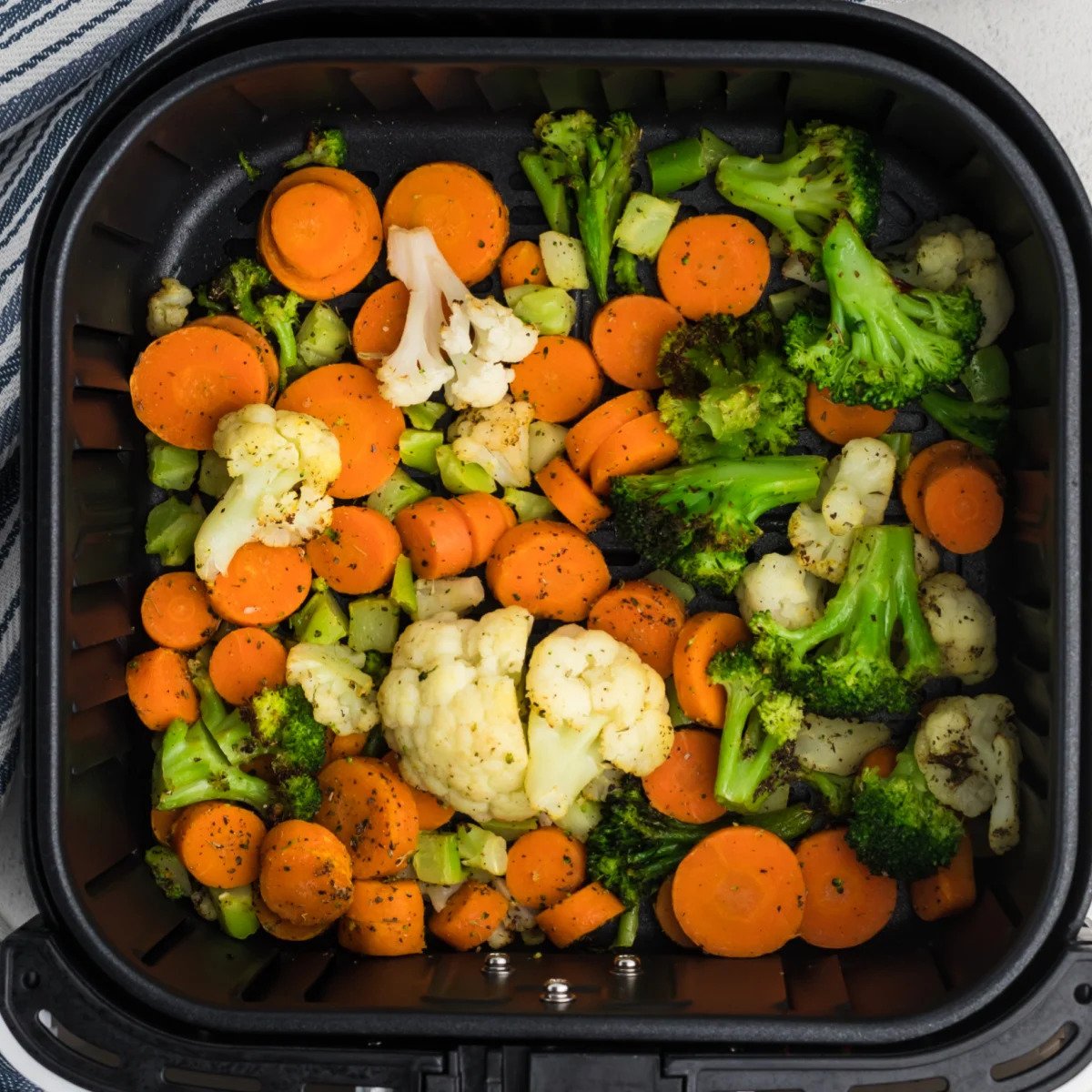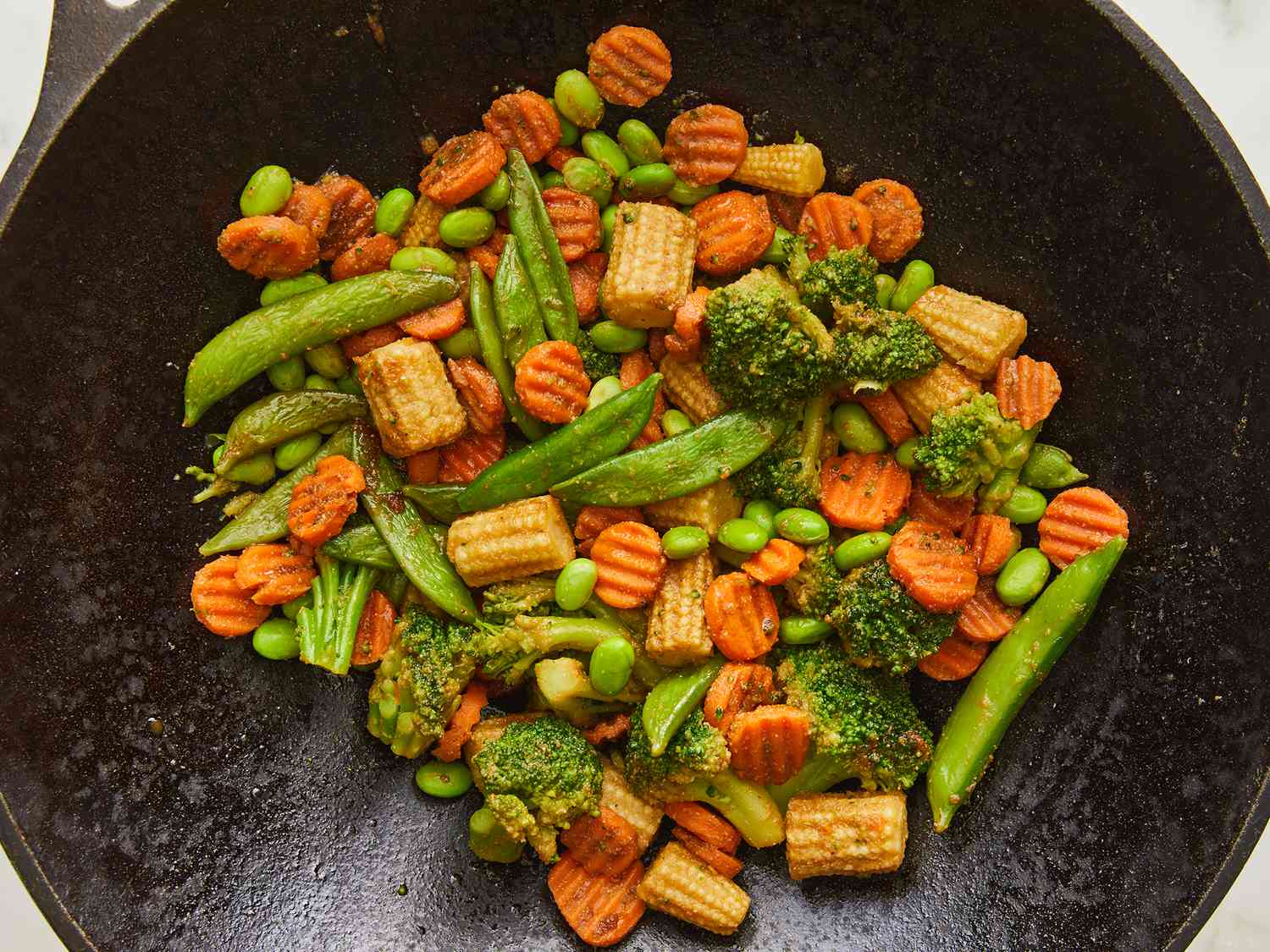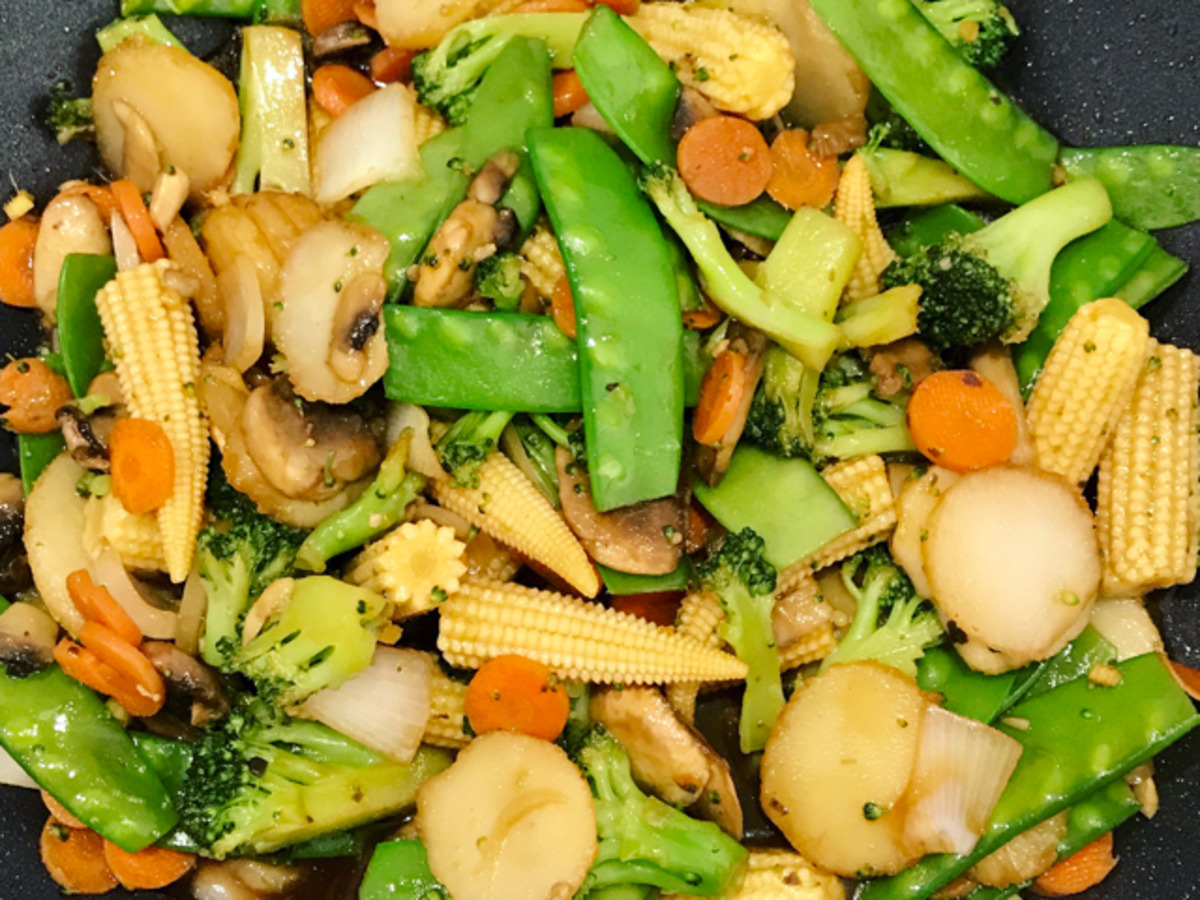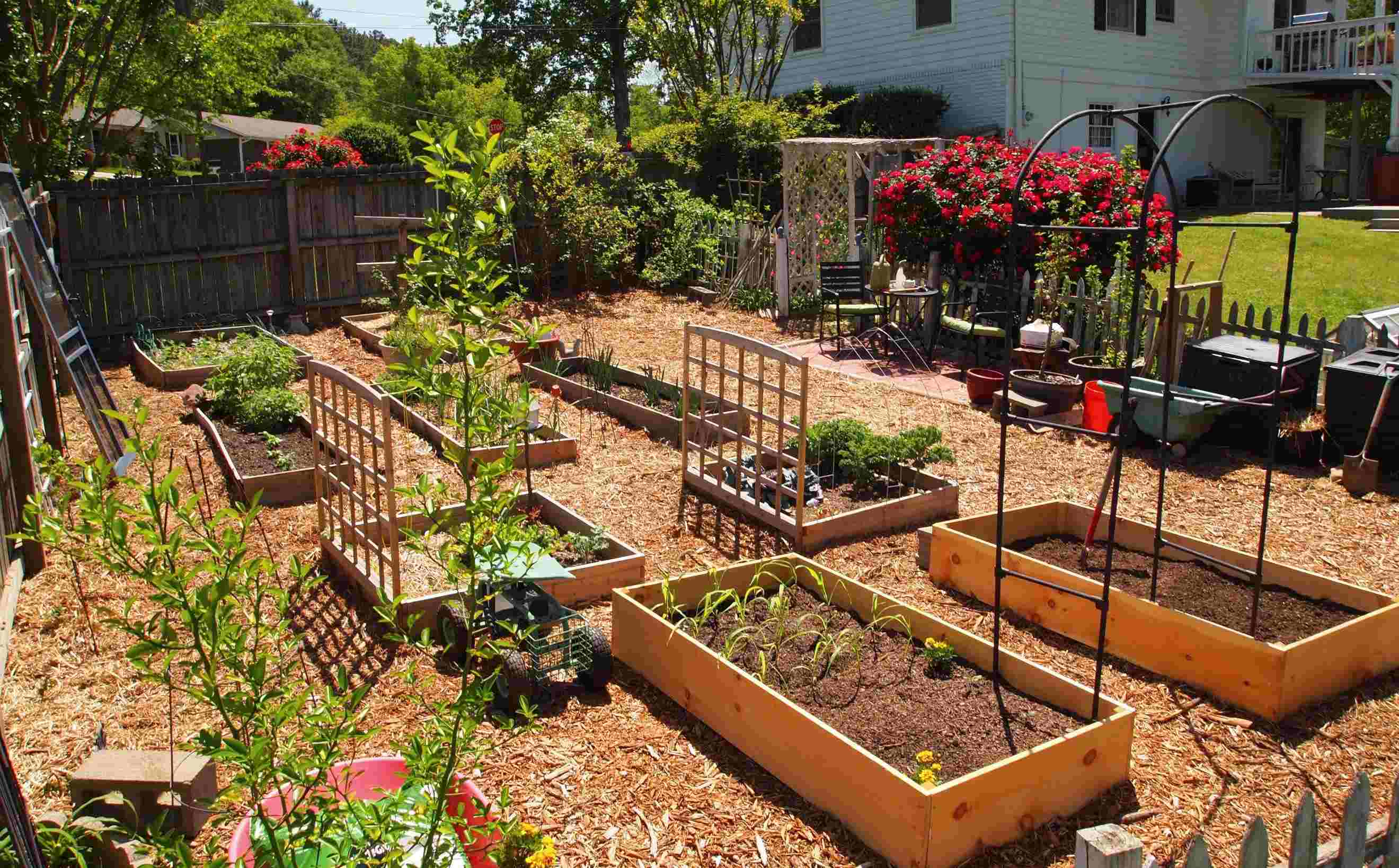Home>Gardening News and Trends>Latest News>How To Make Vegetable Soup With Frozen Vegetables


Latest News
How To Make Vegetable Soup With Frozen Vegetables
Modified: January 22, 2024
Learn how to make a delicious vegetable soup using frozen vegetables! Discover the latest news and tips for creating a hearty and nutritious meal right at home.
(Many of the links in this article redirect to a specific reviewed product. Your purchase of these products through affiliate links helps to generate commission for Chicagolandgardening.com, at no extra cost. Learn more)
Table of Contents
Introduction
When it comes to making a quick and nutritious meal, vegetable soup with frozen vegetables is a perfect choice. Whether you’re short on time or want to utilize the convenience of frozen vegetables, this recipe will help you create a delicious and hearty soup that is both healthy and satisfying.
Using frozen vegetables for soup offers several advantages. Firstly, frozen vegetables are typically picked and frozen at the peak of their freshness, ensuring that they retain their nutritional value. Additionally, frozen vegetables are already pre-cut and pre-washed, saving you time and effort in the kitchen. They also have a long shelf life, making them easily accessible whenever you need them.
In this article, we will guide you through the process of making vegetable soup with frozen vegetables, from choosing the right frozen vegetables to seasoning the soup to perfection. So, dust off your pot, grab your ladle, and let’s dive into the world of flavorful and nutritious vegetable soup!
Before we begin, it’s important to note that you can customize the recipe according to your taste preferences and dietary needs. Feel free to add additional vegetables, herbs, or spices to suit your liking. Now, let’s get started on creating a delicious batch of vegetable soup that will warm your soul and nourish your body.
Choosing the Right Frozen Vegetables
When selecting frozen vegetables for your vegetable soup, it’s important to consider both the variety and quality of the vegetables. Here are some factors to keep in mind when choosing the right frozen vegetables:
- Nutritional Value: Look for frozen vegetables that retain their nutritional value even after being frozen. Read the labels and opt for vegetables that are minimally processed and do not contain added salt or preservatives.
- Variety: Consider the variety of vegetables you want to include in your soup. A good selection typically includes a mix of colorful and flavorful options such as carrots, peas, corn, green beans, and broccoli. You can also find frozen vegetable medleys that combine a variety of vegetables in one package.
- Texture: Take into account the texture of the vegetables when frozen. Some vegetables, like peas and corn, tend to maintain their crunchiness even after being frozen and cooked. Others, like broccoli and green beans, may become softer. Choosing a mix of textures can add a nice balance to your soup.
- Personal Preference: Consider your personal taste preferences. If you have a preference for certain vegetables or want to experiment with different flavors, feel free to mix and match frozen vegetables according to your liking.
It’s also worth noting that some frozen vegetables may require a slightly longer cooking time to ensure they are fully heated and tender. Follow the instructions on the packaging or adjust your cooking time accordingly to achieve the desired texture.
Remember, the beauty of making vegetable soup with frozen vegetables is the convenience and flexibility it offers. You can easily find a wide variety of frozen vegetables in your local grocery store, allowing you to experiment with different combinations and create a soup that suits your taste preferences.
Preparing the Soup Base
Creating a flavorful soup base is the key to a delicious vegetable soup. Here’s how you can prepare the soup base:
- Sauté the aromatics: Start by heating a large pot over medium heat and adding a drizzle of olive oil. Sauté diced onions, minced garlic, and any other aromatics you prefer, such as celery or carrots. Cook until the vegetables are softened and aromatic.
- Add the tomato base: Once the aromatics are cooked, it’s time to add the tomato base to your soup. You can use canned diced tomatoes or tomato sauce. Stir well to combine the flavors and let the mixture simmer for a few minutes.
- Enhance the flavors: To enhance the flavors in your soup base, you can add herbs and spices. Popular options include dried basil, oregano, thyme, and bay leaves. You can also add a splash of Worcestershire sauce for an extra umami kick. Stir in the herbs and spices and let the mixture simmer for a few minutes to combine the flavors.
- Include a liquid: Next, add vegetable broth or water to the pot. The amount of liquid you add will depend on the desired consistency of your soup. If you prefer a thicker soup, add less liquid. If you prefer a lighter soup, add more liquid. Stir well to combine all the ingredients.
- Simmer: Bring the soup base to a gentle boil, then reduce the heat to low and let it simmer for about 15-20 minutes. This will allow the flavors to meld together and create a rich and flavorful base for your vegetable soup.
Remember, the soup base acts as the foundation for your vegetable soup, so it’s important to take the time to develop its flavors. This step is crucial in achieving a delicious and satisfying final result.
Now that you have your soup base ready, it’s time to move on to the next step: adding the frozen vegetables.
Adding the Frozen Vegetables
Once your soup base is simmering and full of flavor, it’s time to add the star of the show – the frozen vegetables. Here’s how you can incorporate them into your vegetable soup:
- Thaw the frozen vegetables (optional): If you prefer your vegetables to be slightly thawed before adding them to the soup, you can do so by placing them in a colander and rinsing them under cold water. However, adding them frozen will not significantly affect the final result.
- Add the vegetables to the soup: Gently add the frozen vegetables to the simmering soup base. Stir well to make sure they are evenly distributed throughout the pot.
- Adjust the cooking time: Depending on the size and type of vegetables, you may need to adjust the cooking time. Typically, frozen vegetables have already been blanched before being frozen, so they require less cooking time compared to fresh vegetables. Simmer the soup for about 10-15 minutes or until the vegetables are tender yet still retain their shape and texture. Avoid overcooking the vegetables, as they can become mushy.
- Consider adding in additional ingredients: If desired, you can add other ingredients to complement the frozen vegetables. For example, cooked beans, lentils, or pasta can add extra substance to the soup. Just make sure to adjust the cooking time to ensure all the ingredients are cooked through.
Adding frozen vegetables to your soup not only saves you time in preparation but also provides you with a variety of nutrients and flavors. The vegetables will infuse the soup with their vibrant colors and delicious taste, making each spoonful a delight.
As the soup continues to simmer, the flavors of the frozen vegetables will mingle with the other ingredients, creating a wholesome and comforting bowl of vegetable goodness.
Once the vegetables are cooked to your desired tenderness, it’s time to move on to the next step: seasoning the soup!
Seasoning the Soup
Seasoning is the final touch that brings your vegetable soup to life. It adds depth of flavor and enhances the overall taste of the dish. Here are some tips on how to season your soup:
- Start with salt and pepper: Salt and pepper are the basics when it comes to seasoning any dish, including soup. Taste the soup and add salt and pepper to your liking. Remember to season in small increments, tasting as you go, to avoid over-salting the soup.
- Experiment with herbs and spices: Herbs and spices can elevate the flavors of your vegetable soup. Common choices include dried basil, oregano, thyme, bay leaves, and Italian seasoning. Add a pinch of these herbs and spices, and let the soup simmer for a few minutes to infuse the flavors.
- Consider umami boosters: Umami, the fifth taste, adds depth and savoriness to your soup. You can enhance the umami by adding ingredients such as soy sauce, miso paste, or a dash of Worcestershire sauce. These ingredients will intensify the overall flavor profile of the soup.
- Balance with acidity: Adding a splash of acidity can brighten the flavors of the soup. You can use a squeeze of lemon juice or a dash of vinegar to achieve this balance. Be cautious with the amount as a little goes a long way.
- Taste and adjust: Throughout the seasoning process, remember to taste the soup and adjust the flavors as needed. Everyone’s taste preferences differ, so adjust the seasonings until you achieve your desired flavor profile.
Seasoning is a creative process, so feel free to experiment and adjust according to your personal taste. If you prefer a spicier kick, add some chili flakes or hot sauce. If you enjoy a smoky flavor, a touch of paprika can do the trick. Play around with different herbs, spices, and condiments to find your signature seasoning blend.
Remember, seasoning is an art, and the key is to enhance and complement the natural flavors of the soup rather than overpower them. With a little bit of experimentation and careful tasting, you can create a vegetable soup that is perfectly seasoned and bursting with deliciousness.
Once you are satisfied with the flavors, all that’s left to do is let the soup simmer for a few more minutes and then tuck into a warm, comforting bowl of your homemade vegetable soup.
Simmering and Serving
Simmering the vegetable soup allows the flavors to meld together and creates a rich and satisfying dish. Here’s how to properly simmer and serve your vegetable soup:
- Simmer the soup: Once you have seasoned your soup to perfection, reduce the heat to low and let it simmer for an additional 10-15 minutes. This will allow the flavors to develop even further and ensure that all the ingredients are fully cooked and melded together.
- Adjust the consistency (optional): If you find that your soup is too thick, you can add some additional vegetable broth or water to thin it out. On the other hand, if you prefer a thicker soup, you can let it simmer uncovered for a bit longer to allow some of the liquid to evaporate.
- Garnish the soup: Before serving, consider garnishing your vegetable soup with fresh herbs such as parsley or cilantro. You can also sprinkle some grated cheese or a dollop of sour cream on top for added creaminess and flavor.
- Serve and enjoy: Ladle the hot soup into bowls and serve it alongside some crusty bread or crackers. The warm and comforting flavors of the vegetable soup are sure to delight your taste buds and nourish your body.
Don’t forget that leftovers can often taste even better the next day as the flavors continue to meld. Store any remaining soup in the refrigerator in an airtight container and enjoy it for a quick and easy meal later on.
Whether you’re looking for a cozy meal on a chilly day or a nourishing bowl of vegetables, vegetable soup made with frozen vegetables is a versatile and convenient option. By following these tips and building flavors through the preparation process, you can create a delightful and nutritious soup that will warm your soul and satisfy your hunger.
So, grab a spoon and savor each spoonful of your homemade vegetable soup – a perfect blend of convenience, nutrition, and deliciousness.
Tips for Customization
While vegetable soup with frozen vegetables is already versatile, there are endless opportunities to customize the recipe to suit your preferences. Here are some tips for customizing your vegetable soup:
- Add protein: To make your soup more filling and satisfying, consider adding protein sources such as cooked chicken, tofu, or beans. These additions will not only enhance the nutritional value of the soup but also help keep you feeling satisfied for longer.
- Experiment with spices: Spice up your vegetable soup by adding different spices and seasonings. Try cumin, paprika, turmeric, or curry powder for an exotic twist. Don’t be afraid to get creative and play around with different flavor profiles to find the combination that tickles your taste buds.
- Include grains or pasta: To make your soup heartier, consider adding cooked grains like rice, quinoa, or barley. Alternatively, you can add small pasta shapes like macaroni or orzo. These additions will add texture and substance to the soup.
- Add extra veggies: While using frozen vegetables provides convenience, you can still incorporate additional fresh vegetables to increase the variety and nutritional value. Consider adding diced zucchini, bell peppers, or spinach for extra color and flavor.
- Harness the power of herbs: Fresh herbs can elevate the flavors of your vegetable soup. Towards the end of cooking, add a handful of fresh herbs such as basil, parsley, or cilantro. This will give your soup a burst of freshness and a delightful aroma.
- Make it creamy: If you prefer a creamy vegetable soup, you can add a splash of heavy cream, coconut milk, or blended cashews for a rich and velvety texture. Be sure to add the creamy element towards the end of cooking and stir it in gently.
- Consider ethnic flavors: Explore different cuisines by incorporating ethnic flavors into your vegetable soup. For example, you can add coconut milk, curry paste, and lime for a Thai-inspired twist, or cumin, coriander, and cinnamon for a Moroccan-inspired flair.
Remember, the beauty of vegetable soup lies in its adaptability. Don’t be afraid to get creative in the kitchen and make the recipe your own. Tailor it to your taste preferences, dietary needs, and the ingredients you have on hand.
By customizing your vegetable soup, you can create a dish that reflects your unique culinary style and brings a delightful twist to an already comforting and nutritious meal.
Conclusion
Vegetable soup made with frozen vegetables is a fantastic option for a quick, nutritious, and delicious meal. The convenience of using frozen vegetables, which are packed with nutrients and picked at their peak freshness, makes this soup a time-saving and accessible choice for busy individuals or those seeking a healthy meal.
By following the steps in this guide, you can create a flavorful and hearty vegetable soup that will warm your heart and nourish your body. From choosing the right frozen vegetables to preparing the soup base, adding the vegetables, seasoning to perfection, and simmering to develop flavors, each step is crucial in creating a soup that is wholesome and satisfying.
Remember that customization is key when it comes to vegetable soup. You can experiment with different herbs, spices, protein sources, grains, or pasta to tailor the soup to your taste preferences and dietary needs. Don’t be afraid to get creative and make it your own!
So, the next time you’re in need of a comforting and nutritious meal, reach for frozen vegetables and whip up a batch of vegetable soup. Enjoy the cozy aromas, vibrant colors, and delicious flavors as you savor each spoonful. Whether enjoyed as a simple lunch, a comforting dinner, or even a make-ahead meal, vegetable soup with frozen vegetables is a versatile dish that will never disappoint.
Now, put your apron on, gather your ingredients, and let’s get cooking! Embrace the wonderful world of vegetable soup with frozen vegetables and savor the joy and nourishment it brings to your table.










